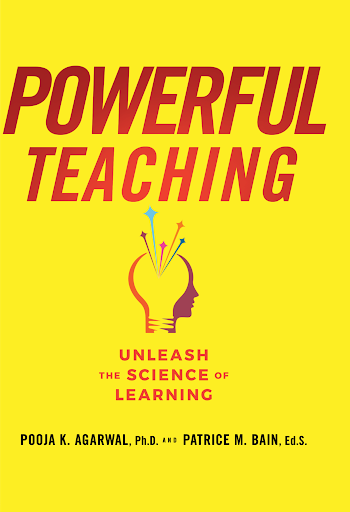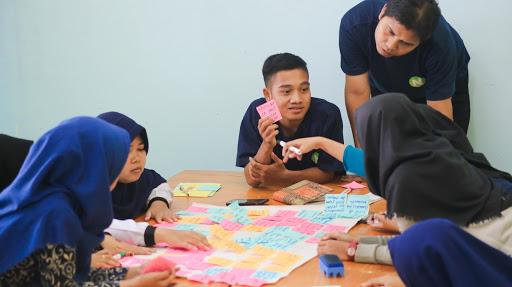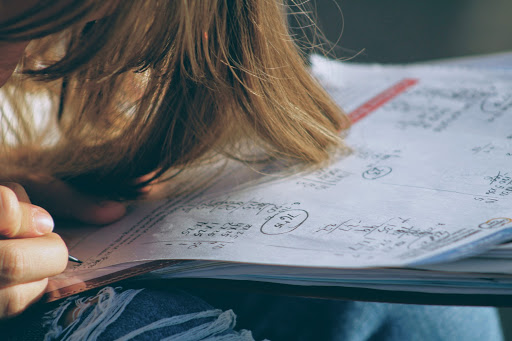
Brain-based strategies, science-based strategies, and evidence-based practices. We’ve all heard those terms when referring to the kinds of strategies we should be using to improve student learning. I don’t know about you, but I know that sometimes it can be hard to dive into the research on learning… there are not enough hours in the day!! Not to mention, many of the journal articles surrounding the science of learning don’t necessarily include the application element that’s so crucial to connect research with practice.

Last year, I read Powerful Teaching: Unleash the Science of Learning by Pooja Agarwal and Patrice Bain, which summarizes the science of learning in layman’s terms and provides evidence-based strategies that all teachers in any content can use immediately. I love a practical book that not only shares the research, but also shares how to use the research in the classroom through tangible strategies. One of the four teaching strategies, which they refer to as “power tools,” is retrieval practices. What exactly is a retrieval practice, and what are the benefits?

There are three stages of learning: encoding, when we learn new information; storage, when we move the information we just learned to memory; and retrieval, when we recover the stored information we previously learned. Agarwal and Bain (2019) argue one of the most effective ways to ensure information encodes is to actually focus on the retrieval stage. Retrieval practices enhance learning for students by asking students to pull stored information that they’ve learned in order to assess what they know.
According to Agarwal and Bain (2019), the benefits of utilizing retrieval practices in your classroom are as follows:

- Improves students’ learning and retention of information over the long term and higher-order thinking and transfer of knowledge
- Identifies students’ gaps in knowledge, which provides formative assessment for teachers and students
- Increases students’ metacognition, engagement and attention in class
- Increases students’ use of effective study strategies outside of class, advanced preparation for class, mental organization of knowledge, and learning of related information that isn’t initially retrieved (p. 38).

At this point, you’re probably thinking retrieval practices are too good to be true and require a lot of prep work. I’m happy to inform you that not only are retrieval practices powerful and proven strategies to promote learning, they are also simple and quick to implement! Additionally, retrieval practices are free, adaptable, and will save you precious instructional time because implementing retrieval practices helps students remember more, meaning less re-teaching for you.
My two favorite retrieval practices from Powerful Teaching to use in the classroom and in professional learning are “Brain Dumps” and “Two Things.”
Brain Dumps

- How it works: At any point in your lesson, pause what you’re doing and ask students to write down everything they can remember about the topic at hand. After students take 1-2 minutes writing down everything they can remember, continue with your lesson.
- Other Notes: As the teacher, you can provide as much time as you’d like depending on your students’ needs. The Brain Dump can be written, typed, more structured, less structured, prompted or not-prompted (e.g., “Describe everything you remember about photosynthesis”). The key is to make it work for you and your students.
- Extension: If you want to extend the Brain Dump, consider having students swap their responses with another student and add something new. The Brain Dump could also serve as the “think” part of a “think-pair-share.” Students can assess commonalities and differences among their responses.
- Here is a Brain Dump Google Form you can copy and modify for your classroom!
Two Things:

- How it works: At any point in your lesson, pause what you’re doing and ask students to write down two things about a specific prompt.
- Sample prompts: What are two things you learned so far today? What are two things you learned yesterday that connect to today’s learning? What are two things you learned last week that connect to today’s learning? What are your two takeaways from this unit thus far? What are two things you’d like to explore further? What are two things from your own life that relate to today’s lesson?
- Here is a Two Things Google Form you can copy and modify for your classroom!
Retrieval practices help teachers assess the learning of students and can be implemented quickly in your existing lessons at any grade level! How can you use one of the retrieval practices in your setting to improve student learning?
